
第二讲 染色体与DNA
第二讲 染色体与DNA
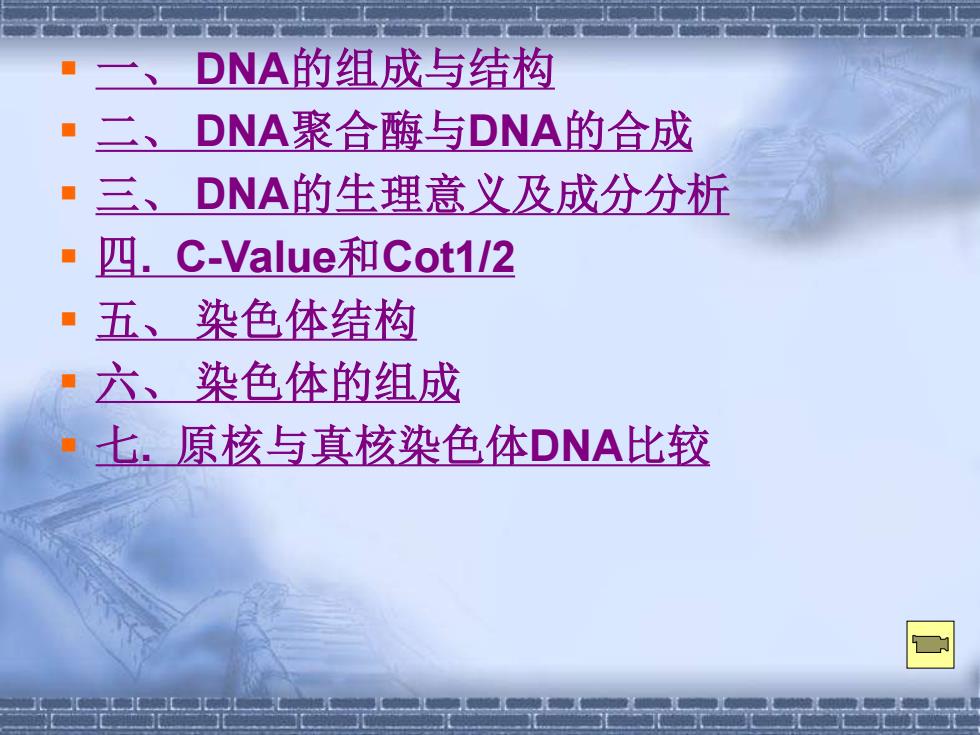
▪ 一、 DNA的组成与结构 ▪ 二、 DNA聚合酶与DNA的合成 ▪ 三、 DNA的生理意义及成分分析 ▪ 四. C-Value和Cot1/2 ▪ 五、 染色体结构 ▪ 六、 染色体的组成 ▪ 七. 原核与真核染色体DNA比较
▪ 一、 DNA的组成与结构 ▪ 二、 DNA聚合酶与DNA的合成 ▪ 三、 DNA的生理意义及成分分析 ▪ 四. C-Value和Cot1/2 ▪ 五、 染色体结构 ▪ 六、 染色体的组成 ▪ 七. 原核与真核染色体DNA比较
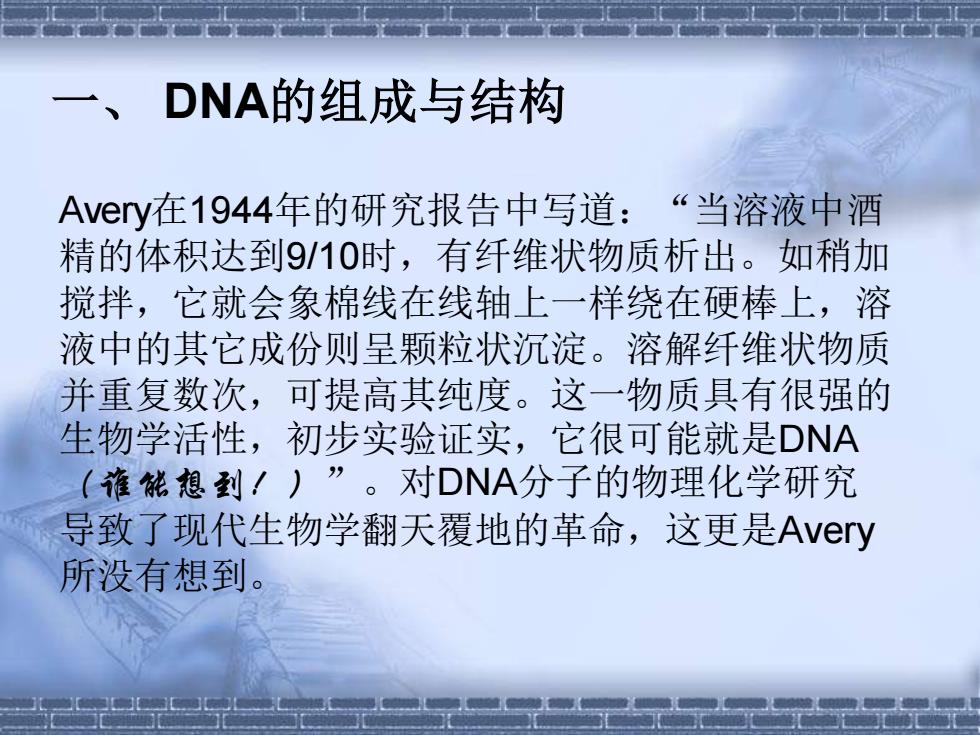
一、 DNA的组成与结构 Avery在1944年的研究报告中写道:“当溶液中酒 精的体积达到9/10时,有纤维状物质析出。如稍加 搅拌,它就会象棉线在线轴上一样绕在硬棒上,溶 液中的其它成份则呈颗粒状沉淀。溶解纤维状物质 并重复数次,可提高其纯度。这一物质具有很强的 生物学活性,初步实验证实,它很可能就是DNA (谁能想到!)”。对DNA分子的物理化学研究 导致了现代生物学翻天覆地的革命,这更是Avery 所没有想到
一、 DNA的组成与结构 Avery在1944年的研究报告中写道:“当溶液中酒 精的体积达到9/10时,有纤维状物质析出。如稍加 搅拌,它就会象棉线在线轴上一样绕在硬棒上,溶 液中的其它成份则呈颗粒状沉淀。溶解纤维状物质 并重复数次,可提高其纯度。这一物质具有很强的 生物学活性,初步实验证实,它很可能就是DNA (谁能想到!)”。对DNA分子的物理化学研究 导致了现代生物学翻天覆地的革命,这更是Avery 所没有想到
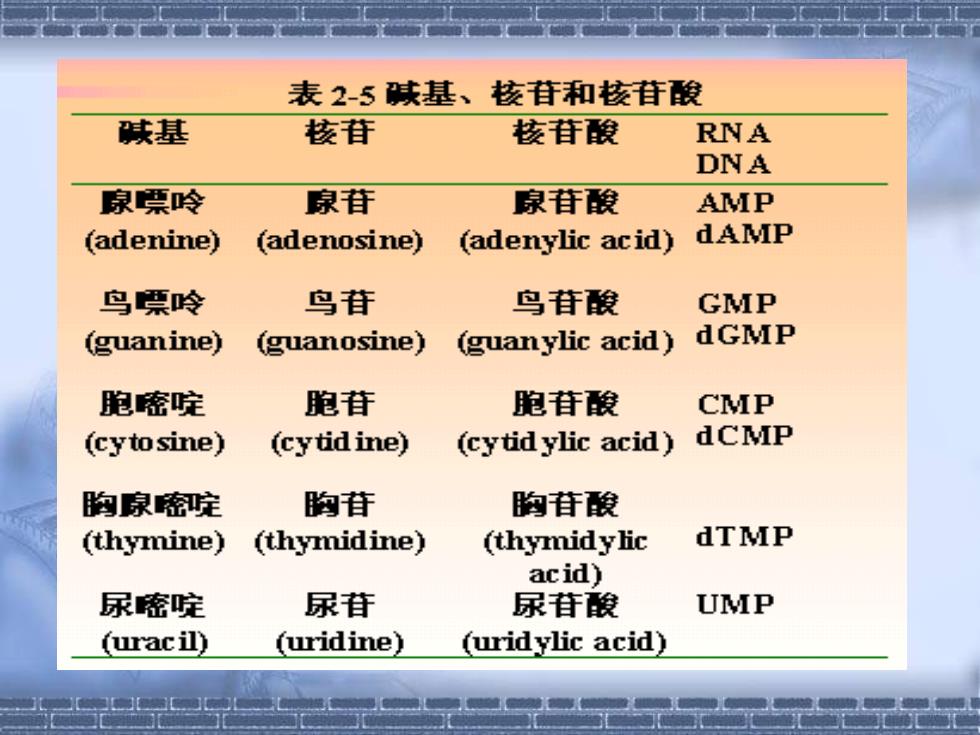
表2-5呋基、核苷和核苷酸 峡基 核苷 核苷酸 RNA DNA 泉嘌呤 泉苷 泉苷酸 AMP (adenine) (adenosine) (adenylic acid) dAMP 鸟嘌呤 鸟苷 鸟苷酸 GMP (guanine) (guanosine) (guanylic acid) dGMP 胞密啶 胞苷 胞苷酸 CMP (cytosine) (cytidine) (cytid ylic acid) dCMP 胸泉啶 胸苷 胸苷酸 (thymine) (thymidine) (thymidy lic dTMP acid) 尿密啶 尿苷 尿苷酸 UMP (uracil) (uridine) (uridylic acid)
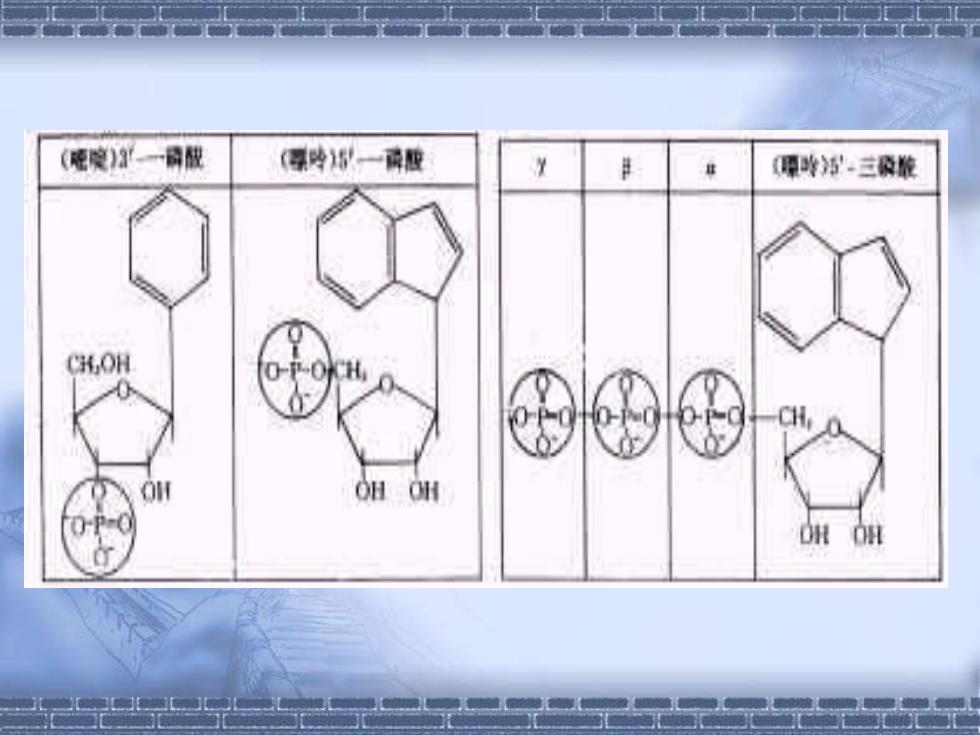
(密突)一每酸 (保内一藏度 (票珍站'.三液酸 CH.OH 0H0
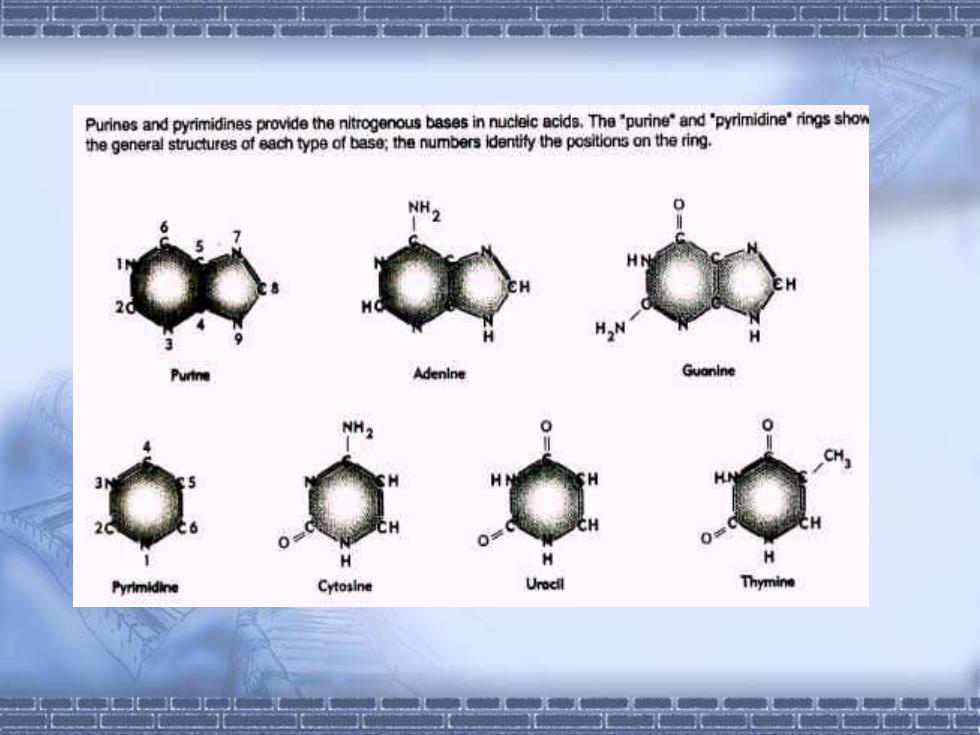
Purines and pyrimidines provide the nitrogenous bases in nucleic acids.Thepurine"and 'pyrimidine'rings show the general structures of each type of base;the numbers ldentity the positions on the ring. H.N Adenine Guan N H Pyrimidine Cytosine Thymine
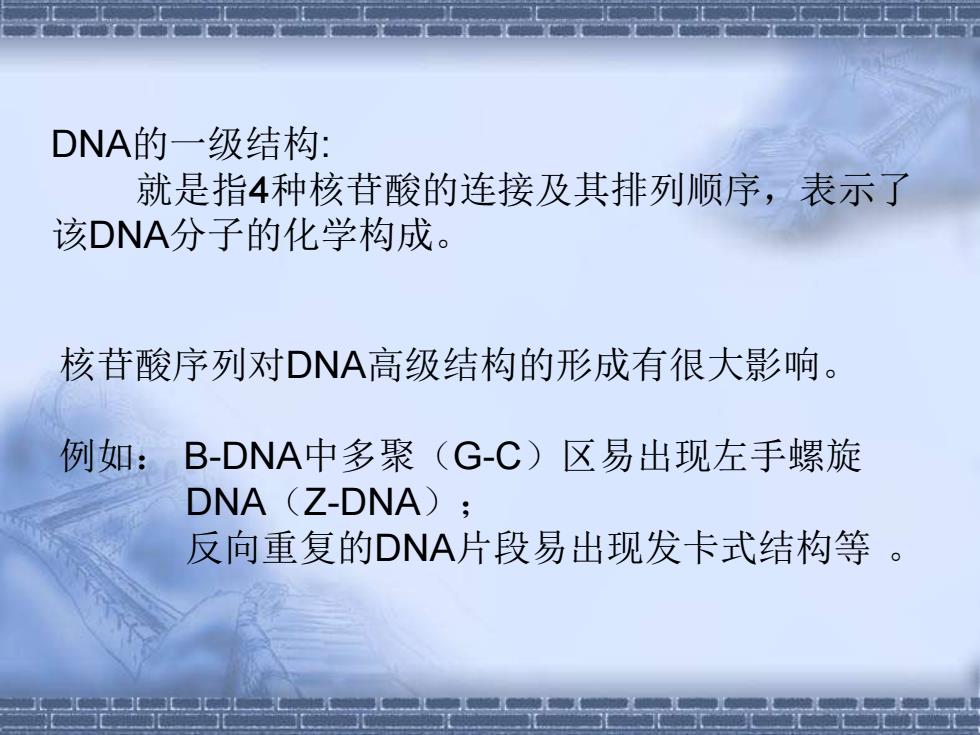
DNA的一级结构: 就是指4种核苷酸的连接及其排列顺序,表示了 该DNA分子的化学构成。 核苷酸序列对DNA高级结构的形成有很大影响。 例如: B-DNA中多聚(G-C)区易出现左手螺旋 DNA(Z-DNA); 反向重复的DNA片段易出现发卡式结构等
DNA的一级结构: 就是指4种核苷酸的连接及其排列顺序,表示了 该DNA分子的化学构成。 核苷酸序列对DNA高级结构的形成有很大影响。 例如: B-DNA中多聚(G-C)区易出现左手螺旋 DNA(Z-DNA); 反向重复的DNA片段易出现发卡式结构等
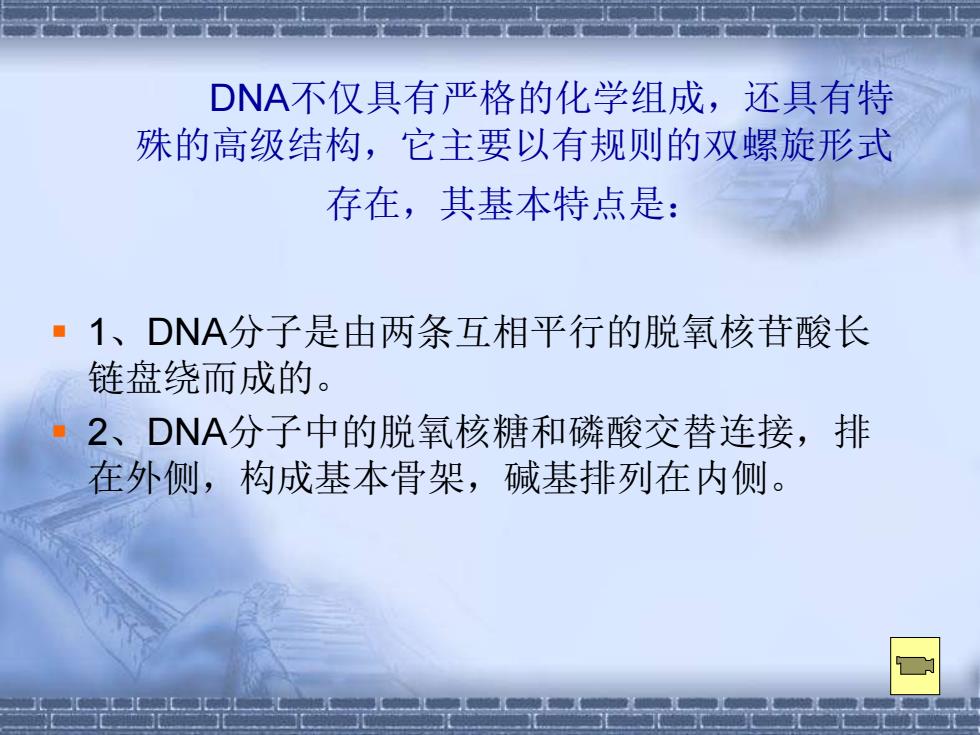
DNA不仅具有严格的化学组成,还具有特 殊的高级结构,它主要以有规则的双螺旋形式 存在,其基本特点是: ▪ 1、DNA分子是由两条互相平行的脱氧核苷酸长 链盘绕而成的。 ▪ 2、DNA分子中的脱氧核糖和磷酸交替连接,排 在外侧,构成基本骨架,碱基排列在内侧
DNA不仅具有严格的化学组成,还具有特 殊的高级结构,它主要以有规则的双螺旋形式 存在,其基本特点是: ▪ 1、DNA分子是由两条互相平行的脱氧核苷酸长 链盘绕而成的。 ▪ 2、DNA分子中的脱氧核糖和磷酸交替连接,排 在外侧,构成基本骨架,碱基排列在内侧
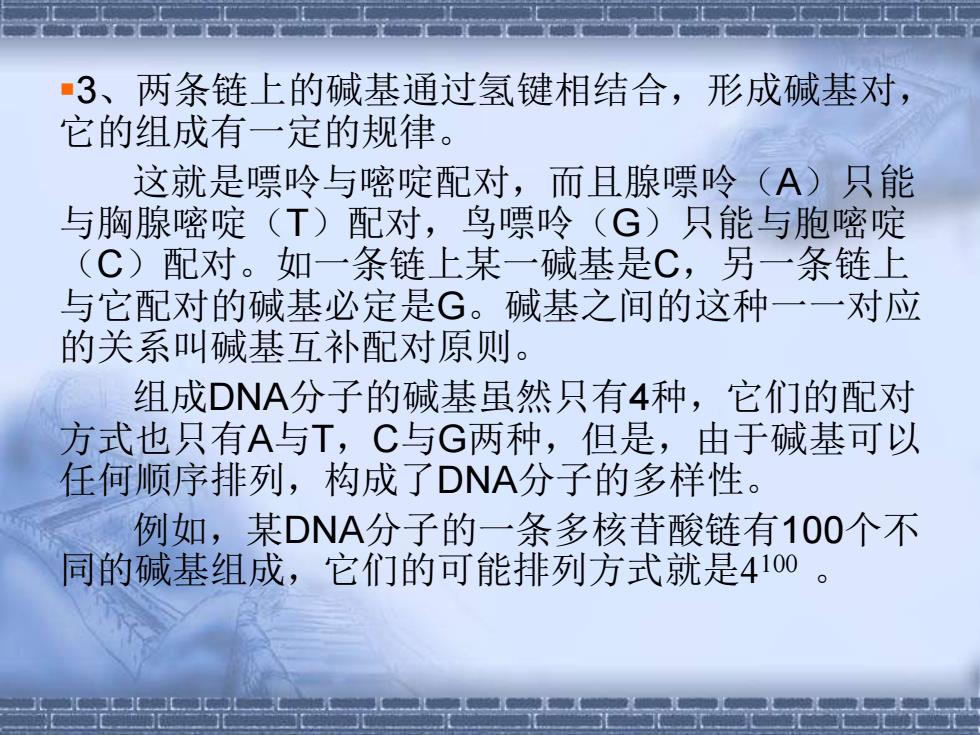
▪3、两条链上的碱基通过氢键相结合,形成碱基对, 它的组成有一定的规律。 这就是嘌呤与嘧啶配对,而且腺嘌呤(A)只能 与胸腺嘧啶(T)配对,鸟嘌呤(G)只能与胞嘧啶 (C)配对。如一条链上某一碱基是C,另一条链上 与它配对的碱基必定是G。碱基之间的这种一一对应 的关系叫碱基互补配对原则。 组成DNA分子的碱基虽然只有4种,它们的配对 方式也只有A与T,C与G两种,但是,由于碱基可以 任何顺序排列,构成了DNA分子的多样性。 例如,某DNA分子的一条多核苷酸链有100个不 同的碱基组成,它们的可能排列方式就是4 100
▪3、两条链上的碱基通过氢键相结合,形成碱基对, 它的组成有一定的规律。 这就是嘌呤与嘧啶配对,而且腺嘌呤(A)只能 与胸腺嘧啶(T)配对,鸟嘌呤(G)只能与胞嘧啶 (C)配对。如一条链上某一碱基是C,另一条链上 与它配对的碱基必定是G。碱基之间的这种一一对应 的关系叫碱基互补配对原则。 组成DNA分子的碱基虽然只有4种,它们的配对 方式也只有A与T,C与G两种,但是,由于碱基可以 任何顺序排列,构成了DNA分子的多样性。 例如,某DNA分子的一条多核苷酸链有100个不 同的碱基组成,它们的可能排列方式就是4 100
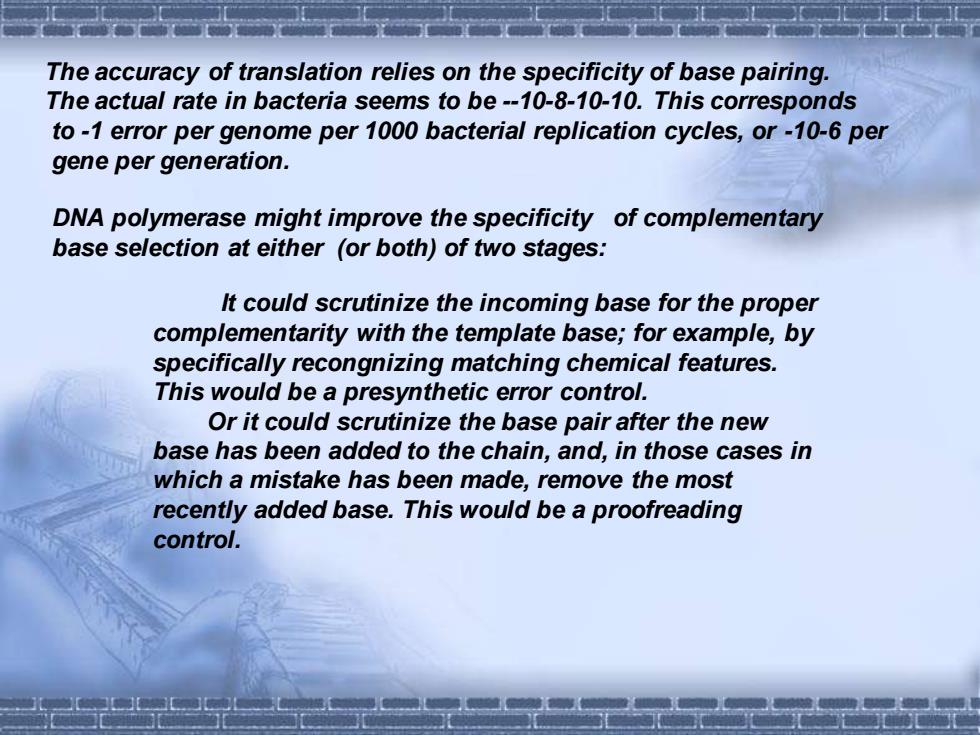
The accuracy of translation relies on the specificity of base pairing. The actual rate in bacteria seems to be -10-8-10-10. This corresponds to -1 error per genome per 1000 bacterial replication cycles, or -10-6 per gene per generation. DNA polymerase might improve the specificity of complementary base selection at either (or both) of two stages: It could scrutinize the incoming base for the proper complementarity with the template base; for example, by specifically recongnizing matching chemical features. This would be a presynthetic error control. Or it could scrutinize the base pair after the new base has been added to the chain, and, in those cases in which a mistake has been made, remove the most recently added base. This would be a proofreading control
The accuracy of translation relies on the specificity of base pairing. The actual rate in bacteria seems to be -10-8-10-10. This corresponds to -1 error per genome per 1000 bacterial replication cycles, or -10-6 per gene per generation. DNA polymerase might improve the specificity of complementary base selection at either (or both) of two stages: It could scrutinize the incoming base for the proper complementarity with the template base; for example, by specifically recongnizing matching chemical features. This would be a presynthetic error control. Or it could scrutinize the base pair after the new base has been added to the chain, and, in those cases in which a mistake has been made, remove the most recently added base. This would be a proofreading control